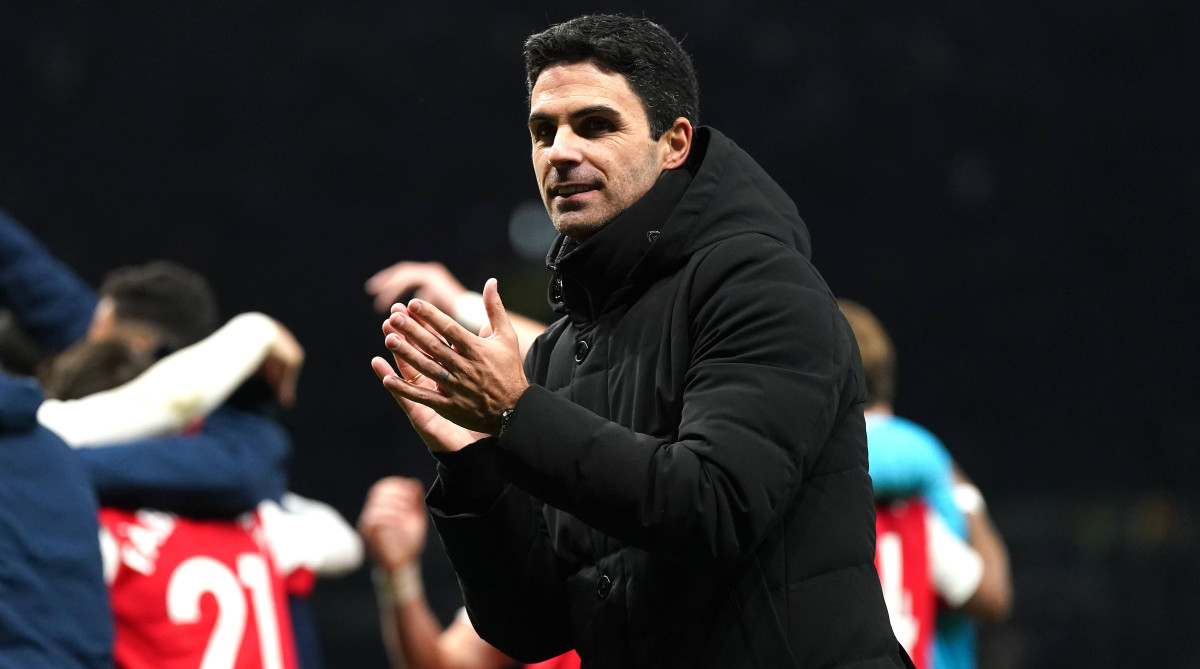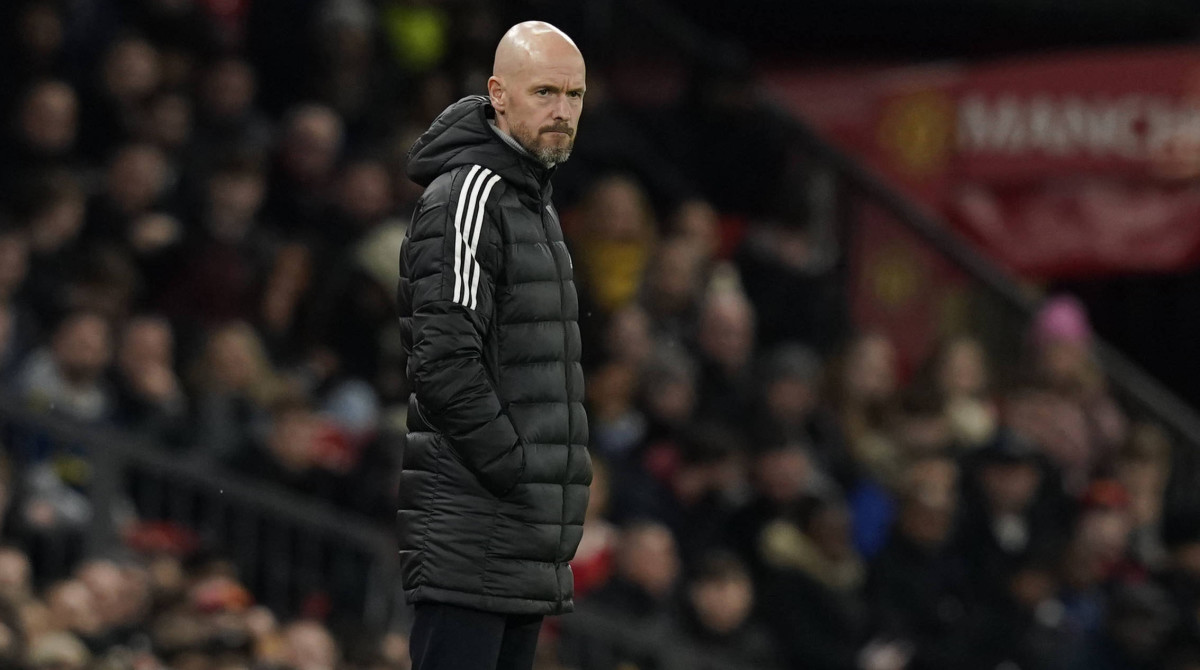Arsenal and Manchester United Are Elite Once Again

It’s January 2020, and Mikel Arteta looks like a weight has been lifted from his shoulders.
And indeed it has: For the first time since taking over as manager of Arsenal, the club for whom he finished out a 15-year career as a midfielder, the Gunners have won a match, and emphatically so. Arteta’s side trounced Manchester United in a 2–0 victory that wasn’t really ever in question.
“All of the things that I demanded and that I wanted to see on the pitch actually happened today,” Arteta said at the postgame press conference with a smile.
The win was a welcome reprieve from the pressure that mounted early in his managerial career. It was a good sign, too, against a United side that seemed to also be figuring things out. But few could’ve predicted where things sit now, two years later.
Arsenal and Manchester United meet Sunday as two of the stories of the Premier League season. Both sides have endured their own calamity in the last few years, United as recently as just a few months ago. And while they went about it in different ways (with vastly different time lines), both have committed their limitless resources to a meticulous plan to return to greatness.

That win over the Red Devils to ring in the new year in 2020 didn’t yet spark a turnaround for Arsenal. The Gunners had a lot of youth and didn’t have the identity Arteta wanted to instill. But the work to rebound was already underway. The summer prior, the club spent big on Nicolas Pépé, a decidedly poor decision. It also brought in Gabriel Martinelli and Kieran Tierney for a combined €34.1 million. Those were the first of some shrewd transfer market moves that would rapidly turn an aging, overpriced squad into a youthful machine.
The next few years brought even more boons from the transfer market. Gabriel, Martin Ødegaard, Aaron Ramsdale, Takehiro Tomiyasu and Oleksandr Zinchenko were all brought in on relative discounts compared to the spend of some of the team’s Premier League rivals. The Gunners paid up on Thomas Partey, Ben White and Gabriel Jesus, and each has found a key role in the squad.
The journey back to the top of English soccer didn’t come without some trouble. Fourteen weeks into the 2020–21 season, Arteta’s first full one in charge, his side sat in 15th in the league table. Arsenal hadn’t won a match in over a month. The performances were uninspired. Fans were crying out for a new manager. But the board didn’t bow to the ebbs and flows of modern soccer. It trusted the man it had hired just 11 months prior to right the ship.
The improvements were gradual but marked, and by the end of the season Arsenal had clawed its way up to eighth in the table. The following offseason was pivotal. The Gunners signed Ødegaard on a permanent deal and made moves for White, Ramsdale and Tomiyasu to revamp an aging, leaky defense. More importantly, Arteta & Co. got rid of the dead weight that had been keeping the club in its slog of mediocrity. A year after letting Mesut Özil and Shkodran Mustafi walk, Arsenal sent away David Luiz, Sead Kolasinač and Willian on free transfers. The same treatment was given to former captain Pierre-Emerick Aubameyang in the spring.
The willingness to fully embrace a youth movement under a manager whose tactics it trusts was the lynchpin of the turnaround. The financial incentives of reaching European tournaments mean few big clubs in today’s game will accept down years in order to build for the future. Even when disaster struck to start the 2021-22 season, after it lost its first three matches by a combined 9–0, the club didn’t flinch. Arsenal charged all the way up to fourth in the table and ended up in fifth, qualifying for the Europa League heading into the 2022-23 season.
Hailing from the Pep Guardiola school of positional play, Arteta needed time—and the right players—for his system to truly take hold. Now, with ball-playing defenders in White, William Saliba and Zinchenko, midfielders who know their roles in Partey, Xhaka and Ödegaard and two wonderful wingers in Bukayo Saka and Martinelli, Arsenal is playing as well as any team in Europe. It’s no coincidence the team’s expected goal (xG) differential has improved in each of the last three seasons. The young core Arteta has assembled is coming together.
The 2022–23 season is where Manchester United’s rebuild truly kicked off. The Ole Gunnar Solskjaer years proved unfruitful, and caretaker manager Ralf Rangnick couldn’t really ever impose his system in the ‘21–22 season. Years of short-term planning had come to a head.
New manager Erik ten Hag arrived in the summer from a dynamic Ajax side. He came with the promise of returning United to the heights that hadn’t been reached since Alex Ferguson was in charge. It was going to take a big overhaul on the pitch, and ten Hag wasted little time. The club sent away Paul Pogba, Edinson Cavani, Nemanja Matić and Juan Mata on free transfers.

The first two matches were disastrous. United lost at home to Brighton, then was thumped 4–0 at Brentford. Ten Hag was going to need reinforcements. So in came the Brazilian duo of Antony and Casemiro for a grand total of €165 million. Their effect was immediate, particularly that of 30-year-old defensive midfielder Casemiro. United had searched for years for someone to provide cover for the back line to no avail. In one fell swoop, it nabbed one of the world’s best from Real Madrid.
The most pressing decision to be made was what in the world to do with Cristiano Ronaldo. The prodigal son had returned in 2021 to score 18 goals in his first season back in the Premier League. But he was no fit for ten Hag’s high-pressing plans, and he refused his role as a substitute in a very public manner. United let him go.
It was a decision that drew the ire of some fans, but ultimately showed an unwavering commitment to ten Hag’s ideas. Combine that with the aggressive, intelligent transfer business over the summer, and the Red Devils had fast-tracked a return to the Premier League’s elite.
It wasn’t just the shiny new transfers, either. Marcus Rashford entered the season seemingly devoid of confidence. Now, as the centerpiece of ten Hag’s attack, he’s playing the best soccer of his career and scored in seven straight games to start 2023. Bruno Fernandes is back to his scintillating form.
If you’re unconvinced the resurgence of both sides is sustainable, look no further than last week. Arsenal and Manchester United exercised a level of control in derby wins neither has had for years. They won the xG stakes in well-deserved victories. It even showed how the managers have instilled their own systems to a T: Arsenal always on the move and passing through Tottenham with ease, and United devastating on the counterattack and suffocating in the press against Manchester City.
Where the two clubs have made headway on their Premier League rivals is in a steadfast commitment to a concerted plan. For all the cash owner Todd Boehly is willing to dump into the transfer market, Chelsea has made big purchase after big purchase without seemingly having a plan in the long or short term. Tottenham, tethered to the fickle nature of manager Antonio Conte, has done little to build on an aging core that finished fourth a year ago. The shine of Liverpool’s incredible 2021–22 season has worn off after it didn’t appropriately replace key departures or help its squad depth.
These turnarounds are no Cinderella stories. Only a handful of clubs in Europe have spent similarly in the transfer market. But the rebuild worked. Arsenal did it slowly. Manchester United, all at once. And the commitment to a manager’s plan, the willingness to let go of the past, the ability to put players in the perfect position to succeed paid off. Two of the Premier League’s most storied sides are back.
